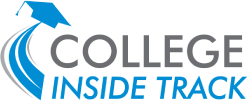Student Loan Borrowing Limit Changes from the new budget bill

The new budget bill has overhauled ways students and parents borrow for college.
Here is a summary of the many student loan borrowing limit changes.
New student loan borrowing limits for federal loans go into effect July 1, 2026. Note that the student loan changes below only apply to federal loans from the government, not private loans from banks and other lenders.
Parent PLUS
Parent PLUS loans will now have an annual limit of $20,000 per year, per student, and a lifetime cap of $65,000 per student. Previously, parents could borrow up to the total cost of attendance at a college, minus any other financial aid received, without any limit.
Families with students already enrolled by June 30, 2026, and who have already received a Parent PLUS loan for that program, may be able to continue borrowing under the old rules for up to three academic years or the remainder of the student’s expected time to completion, whichever is less.
Graduate and Professional loans
Graduate loans for Master’s programs will now have a $20,500 annual limit, and a lifetime limit of $100,000.
Professional program loans such as doctoral and medical will now have a $50,000 annual limit, and a lifetime limit of $200,000.
Grad PLUS loans are being eliminated and no new ones can be taken out as of July 1, 2026. These currently allow graduate students to borrow up to their entire cost of attendance minus any federal aid.
Pell Grants
The bill created a new workforce Pell Grant program, where the grants can now be used for non-degree, certificate and workforce training programs. However, starting July 1, 2026, students receiving grants or scholarships that cover the full cost of attendance will no longer be eligible for Pell Grants.
Student loan borrowing limit ramifications
For the first time, there is a new lifetime limit of $257,500 per person for all undergrad, graduate and professional loans combined.
These changes may mean that families will have to seek less expensive programs, may forgo some education entirely, or may have to identify other sources of funding such as private loans, which generally do not have as favorable of interest rates or borrowing protections as federal loans. Private loans would also not qualify for the Public Service Loan Forgiveness program.
The undergrad direct student loan limits were not changed in the new budget bill.
